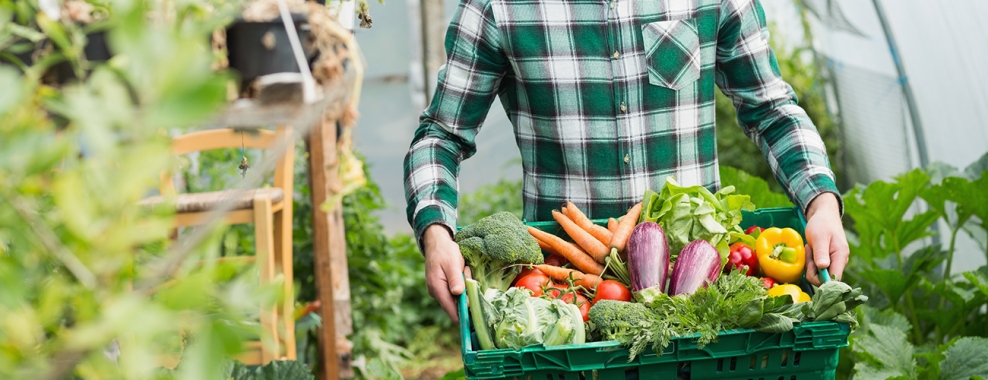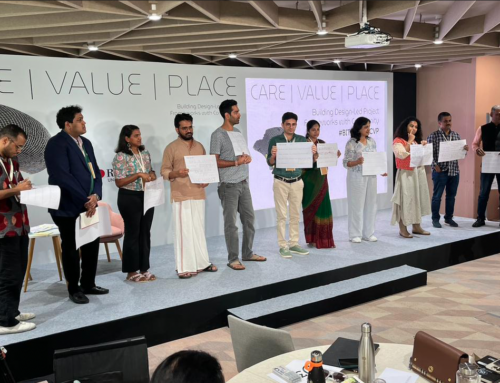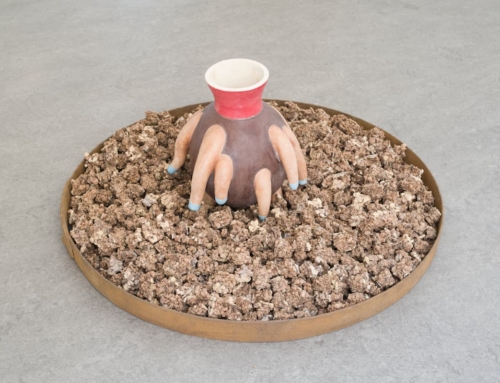Last month I gave a talk at UC Berkeley School of Public Health, as part of the Dean’s Lecture Series, with the title, From Biomedicine to Bioregion: The Geographies of a Care-Based Economy. The video of that talk is here. My interview with Peter Jarrett, for their online journal Berkeley Wellness, is republished below.
The philosopher and writer John Thackara, a senior fellow at the Royal College of Art, in London, scours the world for examples of the ways social innovation can improve the health of communities, which he explores in his blog, doorsofperception.com. He recently spoke at the UC Berkeley School of Public Health about his new book, How to Thrive in the Next Economy. He explores the ways sometimes small steps can make a tremendous difference in solving some of the most intractable challenges in delivering health care.
What are the most serious challenges facing health care?
It’s a multi-dimensional crisis in which trillions of dollars are spent treating the symptoms of illness rather than its causes. Too much of the focus of health care is downstream, on treating people after they get sick, rather than upstream, on keeping them healthy in the first place. The business model of the system is typically pay-per-procedure—when it should really be, we get paid if people don’t get sick.
In Europe, for example, 80 percent of items in the average supermarket contain added sugars. (In the US, an estimated 74 percent of packaged foods contain added sugar.) But rather than impose hefty taxes on the food companies, or simply make their products illegal, lawmakers tend to spend money on costly ad campaigns urging people to eat less and exercise more. Telling people to change their behavior when they are surrounded by overwhelming pressures to eat badly makes little sense.
It doesn’t help that so many experts talk about health as if it was some kind of product. They talk about the “delivery” of health care as if it were a pizza. The delivery metaphor is pervasive in today’s system. But those words perpetuate the myth that health is something produced by one set of people (the professionals) for another (their customers) that we, the customers, have to pay for.
Your background is in design. How did you first become interested in health and healthy communities?
As a writer, I’d observed the costs of health care spiraling out if control, with physicians and hospitals on the frontline getting overwhelmed. But then a time came in my own family when we had to deal with the issue of aging and dementia of a loved one. I began to discover first hand that although elder care is indeed incredibly complex and demanding, it’s not principally about doctors and drugs and hospitals. On the contrary, I learned that about 95 percent of care happens outside the biomedical system—in communities and in the home. And not just among friends and family members. Everyone from cab drivers to police officers to school students is happy to help out. This was a revelation.
A few years ago, I was commissioner of a social innovation biennial in England called Designs of the Time. We did a project called Alzheimer 100 that brought together people with dementia and their caregivers to work with design professionals and researchers. We asked them a simple question: by what practical steps can this huge but hidden world of informal care be supported and improved? Design teams came up with all manner of useful service ideas—from a system to find buddies for caregivers, to one that connected people with dementia with dogs they could pet. These ideas got a lot of publicity and attention. But then the Alzheimer’s Society, almost as an afterthought, added a discussion forum to its website, called Talking Point, and that took off like crazy. It now has well over a million members and something like 84,000 threads. I strongly suspect that an inexpensive piece of software has made a bigger difference to the lives of a million caregivers than all our other efforts combined.
What are the takeaway lessons from that experience?
We need to shift the focus of attention upstream. Health and well-being are properties of the social and ecological contexts in which people live. That context needs to be cared for and, if necessary, repaired. That’s already happening. For example, thousands of groups around the world are involved in watershed restoration projects, tree planting, de-paving, and other projects to improve their environment. What’s been missing is a compelling story and a shared purpose that people can relate to and support, whatever their other differences.
I think the notion of a bioregion—which was first promoted in California in the 1970s—fits the bill for the compelling story we need. A bioregion re-connects us with living systems and each other through the unique places where we live. Growth, in a bioregion, is redefined as improvements to the health and carrying capacity of the land, and the resilience of communities. Its core value is stewardship, not extraction. By focusing our efforts on stewardship as a new concept of value, a bioregion frames the next economy instead of the unsustainable one we have now.
Let’s talk about one of the areas you’re most interested in—healthy foods.
The food many people around the world eat contributes to illness rather than health. Just look at the problem of obesity. We don’t seem to be able to find the political will, the tools, the incentives to tackle the roots of obesity. I think we have to step back and ask ourselves: under what circumstances would this situation be different? We have to think of health as an aspect of the world we live in, not something that we have to pay for and that doctors give us. We have to insist that the health of our environment, our bioregion, is part of the common right of all. If you think of it that way, there are lots of practical things to make our place healthier. Wider access to locally-grown food, for example, through farmers markets and other initiatives. Cleaner water through watershed restoration. More options for home care through volunteer efforts. All of these issues are being addressed, successfully, in small programs.
What programs would you highlight as examples?
At the moment, healthy food is accessible to only a small proportion of the population. We need to find ways for everyone, at every economic level, to have access to it. In Europe, a group called Food Assembly has been enormously successful. The idea behind it is to make Community Supported Agriculture, or CSAs, available to more people. Not everyone can afford to buy a box of rather expensive local produce and pick it up every week. Food Assembly did three things. They set up a platform with more suppliers so there was more variety and more food. They made the food much more easily available by distributing it so people could pick it up near where they live. And they made the pick-up experience a social event, a way to reinforce the sense of community. There are now almost 500 Food Assembly programs around Europe.
You mentioned healthy watersheds, which are obviously key to individual health. What programs inspire you?
ADVERTISEMENT
I’m very inspired by places in the United States where people are looking not only at the water coming out of their taps, but also their rivers and their aquifers, and saying, okay, what can we do to improve and protect this? Let’s agree that in our bioregion we want the cleanest and freshest water possible. What can we do? On a large scale, there are efforts at industrial-scale remediation of soils. But there are also grassroots efforts to restore creeks to health. A group called Nine Mile Run, in Pittsburgh, is restoring an incredibly polluted, concreted-over waterway. Volunteers go out and get dirty and smelly, cleaning it up. But at the end of the day they have the satisfaction of watching a creek become healthy. It’s a very gratifying and joyful activity.
The terrible story of polluted water in Flint, Michigan, highlights the critical need for clean water in a community. I don’t know Flint, but I would bet there are small groups there that are committed to cleaning up the watershed. If that community can come together to recognize that they have a right to clean water—and that there’s something they can do about it—they can build on existing programs.
What can each of us do, as individuals, to improve the health of our communities?
Become involved. One way to look at the challenge of health and well-being is to see a market, but for me, that’s not sustainable. A better way—and really, the heart of my argument—is that we can find frameworks that solve problems through a sharing community. People exchange their time, their energy, their expertise in return for a healthier bioregion. The message I want to convey is that it’s already happening. We are not starting from scratch here. Look around your community. Find a program or project you’d like to get involved with. And do it. All we need to do is find ways to strengthen and grow small success stories, and we’ll go a long way to solving what seem like intractable problems.
This opinion does not necessarily reflect the views of the UC Berkeley School of Public Health or of the Editorial Board at BerkeleyWellness.com.





